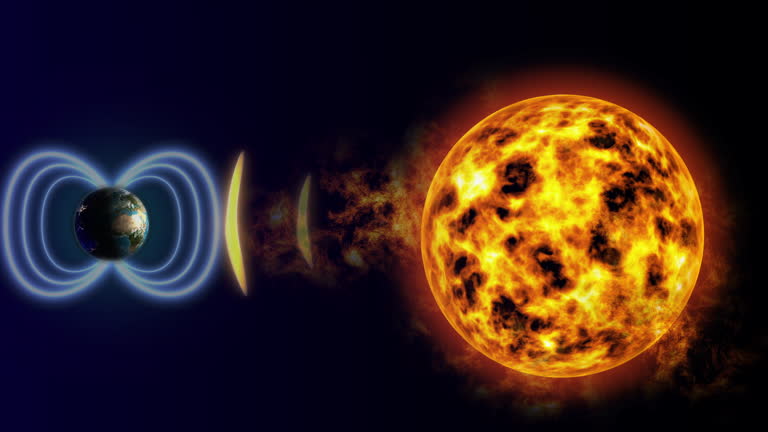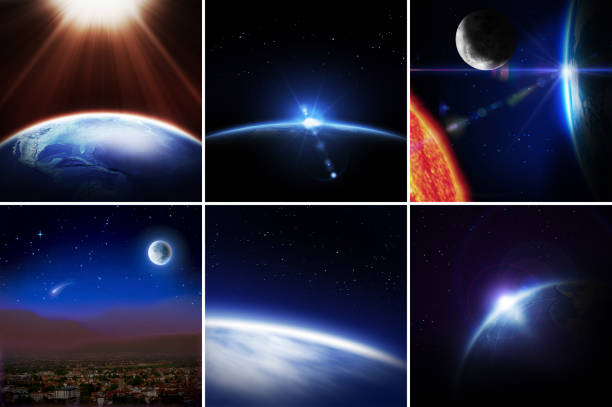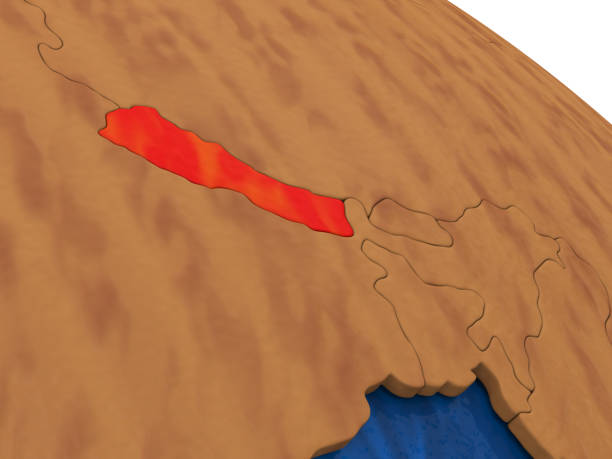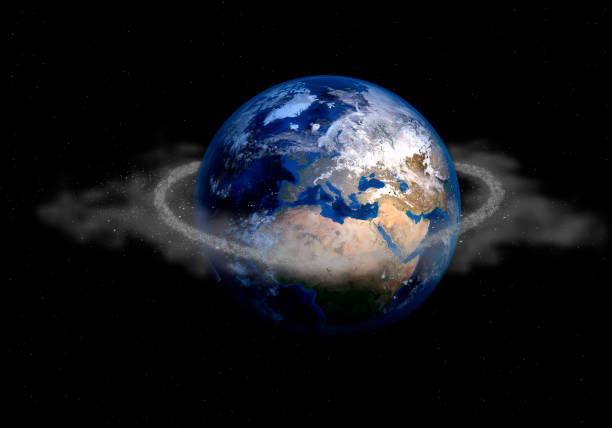I recently learned about the precession cycle and how Earth’s axis wobbles over 26,000 years. It’s incredible to see how this affects our climate and the stars we see.
The precession cycle is a slow, natural wobble in Earth’s axis caused by gravitational forces from the Sun and Moon. This 26,000-year cycle affects Earth’s rotation, climate, and the visibility of stars. Understanding it helps us grasp long-term changes in climate patterns and astronomy.
Stay tuned as we explore the precession cycle is approximately ______years, and its impact on Earth’s climate and stars!
What is the Precession Cycle?
The precession cycle is the slow wobble of Earth’s axis, caused by the gravitational pull of the Sun and Moon. This shift changes Earth’s tilt over time, which affects seasonal patterns, the position of the North Pole, and the timing of equinoxes and solstices. It also alters star positions, meaning stars visible today may not be visible in the distant future.

The full precession cycle lasts approximately 26,000 years, gradually changing Earth’s orientation relative to the stars and celestial bodies. This movement is part of a broader set of long-term cycles that influence Earth’s climate and astronomical patterns.
The Duration of the Precession Cycle:
The precession cycle takes about 26,000 years to complete a full rotation. This period is incredibly long, and since human lifespans are so short, the precession cycle’s effects are not immediately noticeable on a human timescale. However, over millennia, the shift in Earth’s axis can have significant consequences on Earth’s climate, star visibility, and even the Earth’s seasons.
Also Read: https://realestatejot.info/how-to-research-neighborhoods
Here’s how the cycle works in more detail:
- Earth’s axis is tilted at about 23.5 degrees relative to the plane of its orbit around the Sun, which is known as the plane of the ecliptic.
- Over time, the gravitational forces from the Sun and Moon pull on Earth’s equatorial bulge, causing Earth’s axis to move in a circular path. The Earth’s rotational axis traces a cone-shaped pattern over a period of 26,000 years.
- As a result, the location of the North Pole changes slowly but steadily. This movement is so gradual that the stars visible in the night sky shift over thousands of years.
Over a 26,000-year period, this axial shift changes the position of the celestial poles, which are the points in the sky that the Earth’s axis points toward. For example, the current North Star, Polaris, will no longer be the North Star after about 12,000 years. In the future, Vega, a star in the Lyra constellation, will take its place as the North Star.
The Effects of the Precession Cycle on Earth’s Climate and Astronomy:
The precession cycle has multiple impacts on Earth’s climate and the night sky. Its influence is particularly visible when observed over thousands of years. Some of the most prominent effects include:

Seasonal Shifts:
The precession cycle impacts the timing of the seasons. As Earth’s axis wobbles, it changes the orientation of Earth’s tilt relative to its orbit around the Sun. This gradual shift means that over the course of 26,000 years, the equinoxes and solstices occur at different points in Earth’s orbit. Essentially, the timing of seasonal events (like the solstices and equinoxes) slowly shifts.
For example, while the Northern Hemisphere experiences its winter solstice in December today, in thousands of years, this solstice will occur in a different month as Earth’s axial tilt changes.
Changes in Star Visibility:
The precession cycle also alters the visibility of constellations and stars. As Earth’s axis shifts, the position of the stars relative to Earth changes. Over the course of thousands of years, different constellations become visible at different times of the year.
For example, the current North Star, Polaris, will no longer be the North Star in around 12,000 years. This change is due to the slow shifting of the Earth’s rotational axis caused by precession. Vega, a star in the Lyra constellation, will take over as the new North Star, although it will take thousands of years for this to happen.
Impact on Earth’s Climate (Milankovitch Cycles):
Precession plays a role in larger-scale climate patterns known as Milankovitch cycles, which include changes in Earth’s axial tilt, orbit, and precession. These cycles are thought to influence Earth’s long-term climate, particularly the onset of ice ages. Precession, in conjunction with axial tilt and orbital eccentricity, affects the amount of solar radiation that Earth receives at different latitudes during different seasons.
Over thousands of years, the combined effects of precession and other Milankovitch cycles can influence the climate by altering the timing and intensity of seasons. These changes can affect the growth and retreat of ice sheets, which are critical drivers of global climate patterns. However, while precession contributes to long-term climate shifts, it is only one part of the equation. The combination of all Milankovitch cycles is thought to be responsible for the alternating warm and cold periods that characterize Earth’s ice ages.
The Science Behind Earth’s Axial Wobble:
The science behind Earth’s axial wobble, or precession, is based on the principles of physics, particularly the laws of motion and gravity. To understand how precession works, we need to look at a few key factors:

Earth’s Equatorial Bulge:
Earth is not a perfect sphere but rather an oblate spheroid, meaning it is slightly flattened at the poles and bulging at the equator. This equatorial bulge is caused by Earth’s rotation, which pushes material outward. The gravitational forces of the Sun and Moon exert a torque on this bulge, causing Earth’s axis to wobble over time.
Gravitational Interactions:
The primary cause of precession is the gravitational forces exerted by the Sun and the Moon on Earth’s equatorial bulge. These forces act on Earth’s axis, slowly altering its orientation in space. The Moon’s gravitational pull is stronger on the near side of Earth, while the Sun’s influence is felt more uniformly across the planet. This uneven distribution of forces leads to the slow, circular movement of Earth’s axis.
Precession vs. Nutation:
While precession refers to the slow, steady wobble of Earth’s axis, there is also a smaller, periodic movement known as nutation. Nutation is a superimposed oscillation that causes Earth’s axis to move in smaller, periodic shifts. This motion occurs over an 18.6-year cycle and results in tiny, short-term fluctuations in Earth’s axial tilt.
Both precession and nutation work together to gradually alter Earth’s axial orientation over time. However, precession is the dominant long-term effect, while nutation causes smaller, more frequent changes.
FAQ’s about ”The Precession Cycle is Approximately ______Years”
1.What is the precession cycle?
The precession cycle refers to the gradual wobble in Earth’s axis of rotation caused by gravitational forces from the Sun and the Moon. This wobble changes the orientation of Earth’s axis over time.
2.How long does the precession cycle last?
The precession cycle lasts approximately 26,000 years, during which Earth’s axis completes one full circular revolution relative to the fixed stars.
3.How does the precession cycle affect Earth’s climate?
The precession cycle influences Earth’s long-term climate by altering the timing and intensity of seasons, which can contribute to climate patterns like ice ages. It is part of the larger Milankovitch cycles that affect Earth’s climate over thousands of years.
4.What is the difference between precession and nutation?
Precession is the slow, steady wobble of Earth’s axis, while nutation is a smaller, periodic oscillation that occurs over an 18.6-year cycle, causing slight variations in Earth’s axial tilt.
5.Will Polaris always be the North Star?
No, due to precession, the current North Star, Polaris, will be replaced by Vega as the North Star in approximately 12,000 years.
Conclusion: The Precession Cycle is Approximately ______Years!
In conclusion, the precession cycle, lasting approximately 26,000 years, gradually shifts Earth’s axis, influencing seasons, star visibility, and climate over millennia. While the effects are subtle and long-term, they play a key role in shaping Earth’s environment and our observation of the night sky.
Understanding this natural process helps us comprehend Earth’s dynamic relationship with the universe, offering insights into past climate patterns and predicting future changes in both our planet and its stars.








+ There are no comments
Add yours